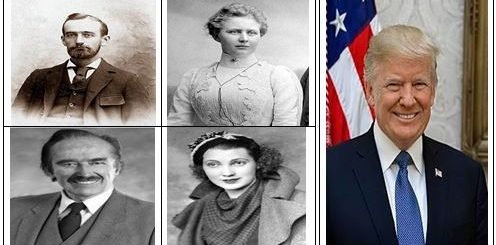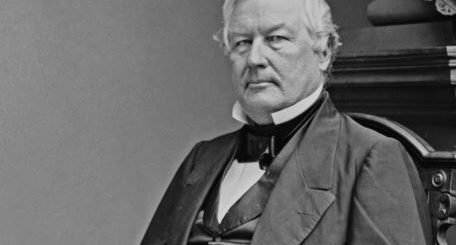The Life and Presidency of William Henry Harrison – America’s Briefest President

William Henry Harrison – 9th President of the U.S.
Nicknamed “Old Tippecanoe”, William Henry Harrison was a Virginia-born military man and politician whose exploits during battles like Battle of Tippecanoe and Battle of Fallen Timbers helped lift him into the limelight of American politics. In the 1840 presidential election, Harrison and his Whig Party completely defeated incumbent President Martin Van Buren, becoming the ninth U.S. President on March 4, 1841.
Unfortunately, William Harrison succumbed to pneumonia, passing away exactly 32 days after his inauguration. This makes him the shortest-tenured president in the history of the United States. He also became the first U.S. president to die before his term lapsed.
Regardless of his brief presidency, William Harrison’s life was a patriot full of military and political service to his country. The following paragraphs explores the life and presidency of William Henry Harrison – America’s briefest president.
Childhood and Education
Born in a very affluent and influential Virginia family on February 9, 1773, William Henry Harrison grew up at Berkeley Plantation, Virginia. His parents were Benjamin Harrison V and Elizabeth Harrison.
William’s father- Benjamin Harrison – was a very influential Virginia politician whose moment of acclaim came when he co-signed the Declaration of Independence.
From age 14 to 17, William Harrison studied at the Hampden-Sydney College, Virginia. Over there he would be trained in classical studies and history. From Hampden, William proceeded to study medicine in Richmond, Virginia.
William H. Harrison’s Military Career

William H. Harrison – Military Career
Due to the passing of his father, William abandoned schooling in 1791 and enlisted in the army – the 10th Regiment, Fort Washington.
It was in the army that William would make his name. He rose quickly from lieutenant to the aide-de-camp to Gen. Anthony Wayne.
William featured immensely in several battles against the Northwest Indian confederation. His most notable battle – the Battle of Fallen Timbers – came on August 20, 1794.
Marriage and Children
Many Harrison biographers state that when Harrison first met Anna Tuthill Symmes, he was in his early 20s. The two quickly hit it off. However, there was some initial rejection from Anna’s father, Judge John Cleves Symmes. As a result of this, Harrison and Anna decided to marry in secret. The marriage took place at North Bend, Ohio on November 25, 1795.
Harrison’s father-in-law later changed his opinion about Harrison. The land that Harrison and his wife Anna Harrison built a home on was sold to them by Anna’s father. The size of the land was 160 acres.
Although Anna’s health was a bit on the downside, Harrison and Anna went on to have 10 children. Many experts believe that her health issues were caused by the frequent nature of her pregnancies. However, she did go on to live into her late 80s. She died on February 25, 1864 – 23 years after the death of her husband, Harrison.
Government Appointments in the Northwest Territory
After about seven years in the army, Harrison resigned in June 1798. He would go on to occupy a number of government positions in the Northwest Territory.
In 1798, the U.S. president at the time, John Adams, appointed Harrison secretary of the Northwest Territory – a territory that included vast stretches of land – Ohio, Indiana, Michigan, Illinois, and Wisconsin. He was the first person to occupy such a position. In 1799, he represented the territory at Congress as a territorial delegate.
Harrison was instrumental in securing the legislation that helped divide the Northwest Territory into two main blocks – the Northwest Territories and the Indiana Territories.
A couple of years after the division, Harrison served as the governor of the Indiana territories from 1801 to 1813.
In 1803, he was appointed a special commissioner in charge of negotiating with Native Americans on land issues. He signed several treaties from 1802 to 1809. Many of these treaties were detrimental to Native Americans by favoring whites more. Several millions of acres of land were taken away from the Native Americans. Those lands were primarily in present-day Indiana and some areas in Illinois, Wisconsin, and Missouri.
For a brief period of time, William Harrison served as the acting governor of the Louisiana Territory. Never before in the history of the United States has any government official been in charge of such a vast area. To this day, Harrison remains the only person to do so.
In 1812, tensions flared up during the Indian uprising. The uprising was triggered by Tecumseh and Tenskwatawa over whites’ incessant expansion into Native Americans’ lands. To quell the uprising, Harrison went back to the army. He was given command over the forces that engaged and defeated Tecumseh and his tribe men. This battle – which occurred on November 7, 1811 around the environs of Lafayette, Indiana – will come to be called the Battle of Tippecanoe.
War of 1812
When the War of 1812 broke out, Harrison was at it again. A few months into the war, Harrison was promoted to Brigadier general. He was given the command of the Northwest Territory as America made a gallant stand against its former colonial master, Great Britain.
With stellar performances and bravery during the war, Harrison was again elevated to the rank of major general in 1813. His unrelenting attitude and bravery were evident during the Battle of the Thames on October 5, 1813. Harrison and his men sent a crushing defeat to British and Indian forces in Ontario, Canada. His arch opponent from the Northwest Indian Confederation, Tecumseh, was even killed in the battle.
In the eyes of many Americans, Harrison’s career trajectory seemed to be heading in a similar direction fellow wartime hero, Andrew Jackson. In the nutshell, Harrison’s reputation was advanced due to his heroics in the war.
Back in the Political Arena
After the War of 1812, Harrison moved to Ohio and took up some government positions. From 1816 to 1819, Harrison was a member of the U.S. House of Representatives. As a representative, some of the issues that were dear to his heart were pension laws and state militia organization. He did, however, vote against James Tallmadge’s amendment of 1819. The amendment was introduced to curtail the extension of slavery in America.
After he had paid his dues in the House, Harrison turned his attention to the Ohio Senate. Over there, he would go on to serve from 1819 to 1821. This was followed by a three-year stay in the U.S. Senate, from 1825 to 1828. Eight years prior to that, Harrison had contested the 1820 governorship election for Ohio. Unfortunately, he failed to win the contest.
From 1828 to 1836, William Harrison was rumored to be eyeing the command of the U.S. Army. In 1828, he was also linked to the vice-presidential position under the ticket of John Quincy Adams. He did however secure for himself a position in John Quincy Adams’ administration, serving as a top foreign diplomat (3rd U.S. Minister to Gran Colombia) in 1828/29. After his recall, Harrison took some time off and retired briefly at his home in North Bend, Ohio.
1836 Presidential Election
In 1836, the emerging Whig Party believed strongly (at least the majority of them, that is, Pennsylvania, New York, and Maryland) that in placing their fate in Harrison, Americans could benefit a lot from someone with similar war background as Andrew Jackson. Therefore, the Whig Party presidential candidacy was given to William Harrison.
Harrison faced off with Democratic Party presidential candidate Martin Van Buren. Due to the lack of a strong collective front on the part of the Whigs, Harrison could only secure a second-place finish. He pulled 73 electoral votes, as opposed to the 170 votes to secured by Martin Van Buren . Hugh L. White and Daniel Webster – the other Whig Party presidential candidates in the election – pulled 26 and 14 electoral votes respectively.
1840 Presidential Election
Owing to the immense challenges that plagued Martin Van Buren’s presidency, the opposition was confident going into the 1840 presidential election. This time around, the Whig Party seemed more united than they were in 1836. Again, they kept fate in William Harrison. John Tyler was chosen as his vice-presidential candidate.
On his way to victory, Harrison beat Henry Clay to win the ticket for the Whig Party. His entire campaign was leveraged on his achievements in the army. He appeared to Americans as the new Andrew Jackson. Besides, President Van Buren’s term in the White House was far from impressive. With woes such as: the Trail of Tears; the financial meltdown of 1837; and the “spoils system”, Americans voted for a change, which was in the person of Harrison.
William Harrison was able to blow incumbent president Martin Van Buren out of the water, wining 234 electoral votes as against Van Buren’s 60.
William Harrison’s Presidency

William Henry Harrison’s Presidency| Portrait by James Reid Lambdin
At age 67, Harrison entered the White House as the oldest person at that time to become president of the United States of America. On a very cold winter season, he made his way to Washington D.C. by railroad, arriving in February 1841.
On March 4, 1841, William H. Harrison came into office as the 9th president of the United States of America. All throughout the inauguration ceremony, Harrison opted not to wear any gloves or overcoat. This was in spite of the sub-zero temperature on the day of his inauguration ceremony. Additionally, his inaugural address lasted for two whole hours.
Harrison’s road map for his presidency was aimed at limiting the role of the White House. He believed that the executive’s job was to play a facilitating role. He also stated that he was not going to frequently use his veto power. Finally, Harrison categorically told the American public that he intended staying for just one term.
Death of William Henry Harrison
Well, as fate would have it, Harrison did not stay for a term. He stayed for just one month. On April 4, 1841, news broke out of President William Harrison’s death. The president had spent just 32 days in office – the briefest duration of any American president in history.
Doctors believe that Harrison got a cold during the inauguration ceremony. And that cold quickly turned into a fatal pneumonia. Harrison was 67 years old when he died. He was survived by his wife Anna Harrison and four legitimate children of his: Elizabeth Bassett (1796–1846), John Scott (1804–1878 – the father of the 23rd U.S. President Benjamin Harrison), Mary Symmes (1809–1842), Carter Bassett (1811–1839), and Anna Tuthill (1813–1865).
His body was laid in state in the Capitol and later put to rest in Washington. A couple of months later, his final resting place was changed to North Bend, Ohio.
After the death of William Henry Harrison, Vice President John Tyler – America’s 10th president – was sworn in as his replacement.



























